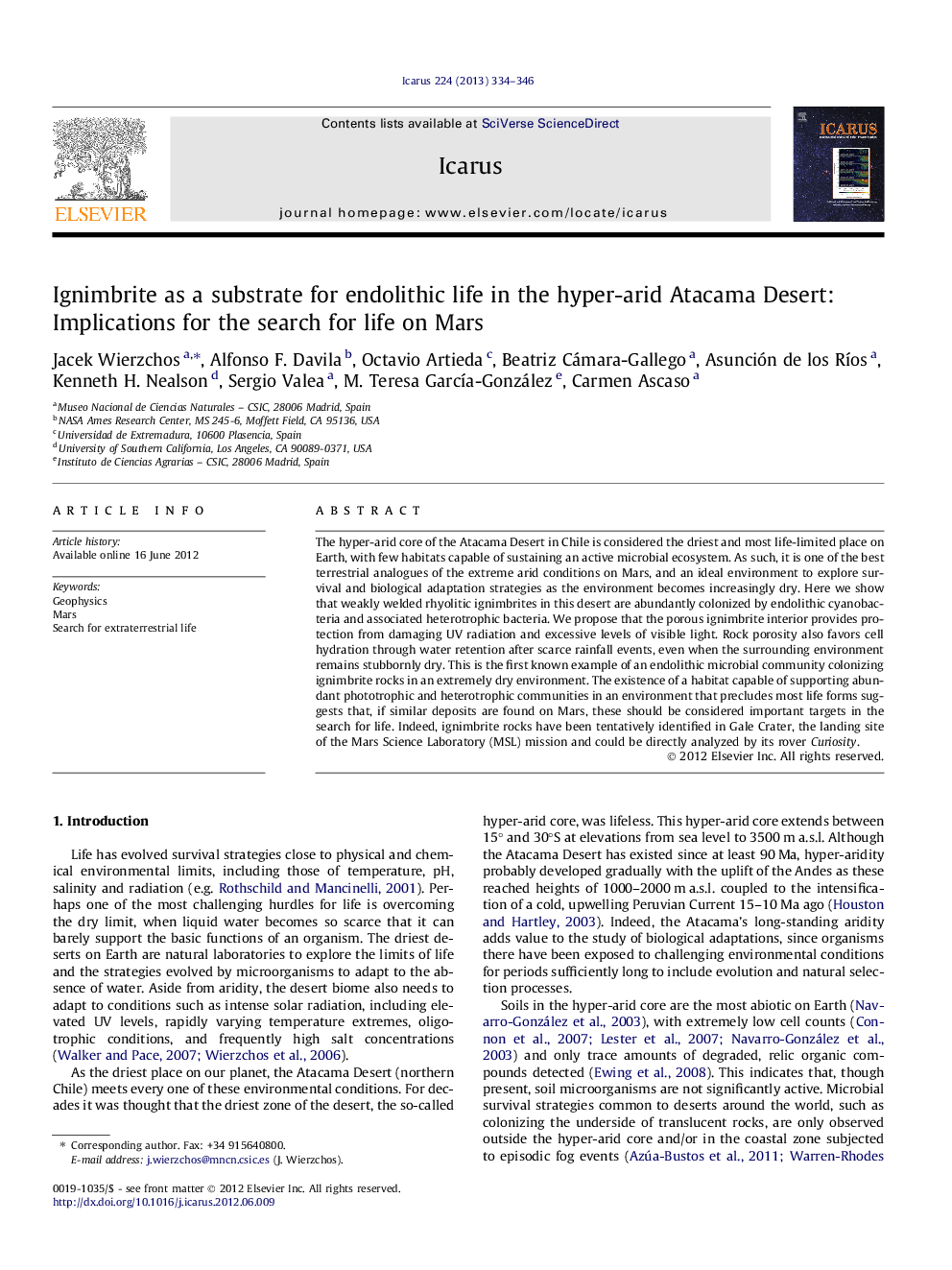| Article ID | Journal | Published Year | Pages | File Type |
|---|---|---|---|---|
| 1773398 | Icarus | 2013 | 13 Pages |
The hyper-arid core of the Atacama Desert in Chile is considered the driest and most life-limited place on Earth, with few habitats capable of sustaining an active microbial ecosystem. As such, it is one of the best terrestrial analogues of the extreme arid conditions on Mars, and an ideal environment to explore survival and biological adaptation strategies as the environment becomes increasingly dry. Here we show that weakly welded rhyolitic ignimbrites in this desert are abundantly colonized by endolithic cyanobacteria and associated heterotrophic bacteria. We propose that the porous ignimbrite interior provides protection from damaging UV radiation and excessive levels of visible light. Rock porosity also favors cell hydration through water retention after scarce rainfall events, even when the surrounding environment remains stubbornly dry. This is the first known example of an endolithic microbial community colonizing ignimbrite rocks in an extremely dry environment. The existence of a habitat capable of supporting abundant phototrophic and heterotrophic communities in an environment that precludes most life forms suggests that, if similar deposits are found on Mars, these should be considered important targets in the search for life. Indeed, ignimbrite rocks have been tentatively identified in Gale Crater, the landing site of the Mars Science Laboratory (MSL) mission and could be directly analyzed by its rover Curiosity.
► We report cryptoendolithic cyanobacteria within ignimbrite in the Atacama Desert. ► Ignimbrite habitat helps retain moisture, absorbs UV and attenuates the PAR. ► Vesicle pores inside the ignimbrite could also become repositories of biomarkers. ► Ignimbrite rocks in Gale Crater make this substrate a target for Curiosity rover.
